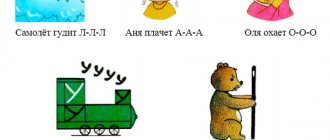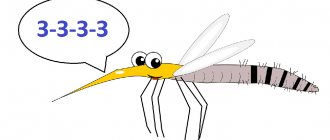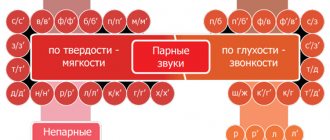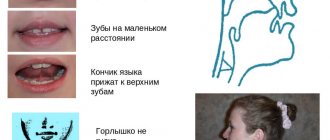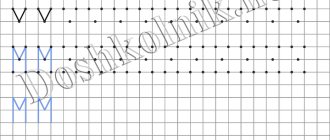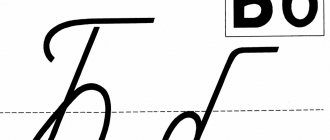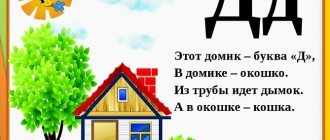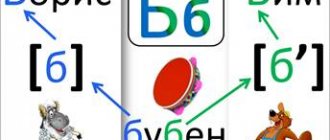Introducing the sound [X]
Topic: introduction to the sound [X].
Goal: to introduce children to the sound [X].
Tasks:
- Teach children to clearly pronounce the sound [X];
- Teach children to differentiate the sound [X] by ear and in pronunciation;
- Develop phonemic awareness in children;
- Introduce the sound designation of sound.
Demonstration material: pictures: banana, sofa, album, vitamins, hamster, refrigerator, tail, bread, trunk, robe, artist, tomato, spider, orange, drum, car; sound symbol: grandfather snores: XXX….
Progress of the lesson
I. Organizational moment.
1. The teacher shows the children a picture and asks them to listen to the name of the drawn object. If the children hear the correct name, then they should clap their hands, but if it is distorted, then not: baman-panam-banan-banam; wavan-davan-divan-vanan; album-albon-anbom-able-alp; Vitavin-mitanite-fitamin-mitavim-vitamin-vitalim. Children carry out the teacher's assignment.
II. Work on the topic of the lesson.
1. D/i “Highlight the first sound.” The teacher invites the children to listen to a series of words and name what identical sound is heard at the beginning of these words: trunk, refrigerator, tail, hamster, bread.
2. Articulation of sound [X]. An adult explains to the child the articulation of the sound [X]: lips and teeth are free; the tip of the tongue is lowered down, and the back of the tongue is moved towards the hard palate, forming a gap for warm air; the neck is “silent”. Sound symbol: grandfather snores: XXX...(show the corresponding picture).
3. Characteristics of sound [X]. Children answer a series of questions: What sound is this? (consonant). Why? (the tongue creates a barrier to the air). How do we designate it? (blue square). We remind the children that we hear and speak sound.
4. Phonetic exercise. The girl warms her frozen hands: XXXXX... (on a smooth, long exhale).
5. D/i “Clap your hands if you hear the sound [X]”: X, P, M, X...; HA, HO, PU...; AH, OM, OH...; BREAD, MILK, LOAF, MOSS, EAR….
III. Physical education minute.
In order for everyone to wake up, we need to stretch, stomp our feet, clap our hands, spin around and sit down, and we all need to sit down.
IV. Continuation of work on the topic of the lesson.
1. D/i “Repeat a series of syllables”: AH-OH-UH-IH; HA-HO-HU-HY. 2. D/i “Say the sound”: the teacher names the beginning of the word, and the children only the last sound in the word: PETU..., PASTU..., OTDY..., ZAPA..., LOPU..., GORO..., SHORO..., STRA.... 3. Working with pictures (pictures starting with the sound [X] and other sounds). The teacher first asks to name all the pictures, then only those that begin with the sound X, after which the children name pictures that begin with other sounds.
V. Summary.
Children answer a number of questions: what sound did you become familiar with? How does grandpa snore? What is the sound [X]? How do we designate it? We give sweet surprises to children.
See Print on canvas Dnepr on the website.
Online speech therapy exercises
Speech therapy of vowels:
|
| | | | | | | | | Difficult vowels:
e;e;yu;ya |
e;u;e;y;a;o;e;ya;i;yu | Setting consonant sounds and letters:
|
| | | | | | | | | | | | | | | | | | | Difficult consonants:
b;p | w;w | z;s | g;k | s;ts | v;f | r;l | p;l | r;p;l | z;s;c | h;f;sh;sch;ts;x |
Corrective work must be comprehensive and systematic. At your service are a variety of entertaining exercises for speech development (). Speech is the highest mental function of a person. It is provided by the brain, therefore, deviations in its work must be noticed and corrected in time. Children with severe speech impairments need systematic help from a speech therapist. It is best if the classes take place simultaneously. For example, you go to kindergarten and learn to say a certain word. Or learn a song. Here on the site you will find exercises for setting all the sounds of the Russian alphabet, and also teach your child to read. The more active you are with your kids, the faster he will learn to speak correctly.
Correction of violations of the pronunciation of the sound /X/.
If a child has impaired pronunciation of all hard back-lingual sounds, first give him the pronunciation of the sound /X/, then /K/, then /G/. If the child has acquired the sound /X/ earlier, I begin to produce the sound /K/, and then, based on the correct pronunciation of this sound, to produce the sounds /X/ and /G/.
Production of the sound /X/ by imitation..
A). The sound /X/ is easily evoked by imitation using a play technique: “Open your mouth wide and breathe on your hands, “warm them.” In this case, the speech therapist makes sure that the tip of the child’s tongue is at the bottom, and the back part rises steeply, but does not touch the palate. You can, for example, first invite your child to make a “low slide”, and only then “let the breeze”.
b). You can offer your child a funny picture or toy to make him laugh, laugh with him, and then draw his attention to the laughter: we laugh “ha-ha-ha.” We fix the sound /X/ in combination with other vowels (O, E, Y).
Staging the sound /X/ with mechanical assistance.
If it is not possible to produce a sound by imitation, it can be produced with mechanical assistance, that is, using a probe to move the tongue deeper into the tongue. We ask the child to pronounce the syllable “sa”, with the correct position of the tongue it will turn out “sa-sa-ha-ha”.
Setting the sound /X/ from the correct /K/..
The child is asked to pronounce the sound /K/ often and protractedly. At this time, the combination “kh” is obtained. It is necessary to draw the child’s attention to the fact that after the sound the sound /X/ is heard, after which we tear off /K/ from /X/. It turns out /X/.
Production of the sound /Х'/ by imitation:
The sound /Х/' is called immediately in syllables. The speech therapist asks the child to smile and say the syllable “HI” repeatedly, imitating the laughter of a little girl.
Staging the sound /Х'/ with mechanical assistance:
The sound /X'/ is placed from the reference sound /S/, the child is asked to pronounce the syllable “SA”, the speech therapist, using a probe, moves the tongue deeper into the mouth until the sound combination “hya” is heard: “sa-sya-hya”.
